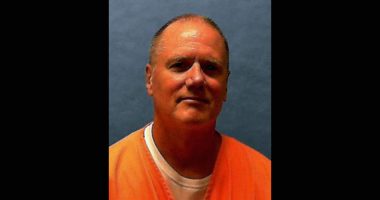
The Palm Coast City Council is considering moving all its meetings to evening sessions. That would end a 25-year custom, when the council has held one of its business meetings in the morning, and one in the evening, with all its workshops scheduled in the morning.
The possibility is prompted by some council members’ assumption, disproved by the record and other local governments’ experience, that evening meetings would increase attendance and participation.
The council is divided. Mayor Mike Norris and Council member Ray Stevens favor all-evening meetings. Council members Theresa Pontieri and Charles Gambarro favor the current set-up, with the recent addition of an evening workshop to go with the morning one.
Council member Ty Miller was not inclined one way or the other when the council first discussed the potential change last month, though he noted that some people work in the evening, and city staffers work all day long, with evening meetings extending their workday. Whenever they’re scheduled, Miller wants to “streamline and make these council meetings not be a seven-hours-long” session.
Stevens prompted the debate at the end of his first meeting on Nov. 19, with Norris joining him. Stevens motioned to move all meetings to the evening, and to move up proclamations segments to 5:30 p.m., so as to shorten the business (or voting) portion of meetings. But the change can’t be done outright. The rules are written in an ordinance that would have to be amended, workshopped, then voted on at two subsequent meeting.
The council is having that very discussion at its workshop on Tuesday, with the Nov. 19 discussion as an indication of how it might go. But there appears to be some misconceptions among new council members that meeting timing has much of a bearing on attendance.
“Night meetings provide the larger portion of the citizens of the city to come and participate,” Mayor Mike Norris said. “I’m sure balancing kid-work life schedule and stuff like that is not too hard.” He said he would like to have all meetings at night.
Norris was not quite accurate about the “larger portion of the citizens.” Half the city’s adult population is not in the workforce, according to employment and Census figures. (Last month, just 49,000 of the county’s 97,000 adults held jobs; the figure doesn’t distinguish between full and part-time workers; the city accounts for 85 percent of that population.) That hasn’t resulted in an appreciable different in who fills council seats aside from a few regulars.
Even at workshops, there has not been a public clamor for more evening meetings. There are public grumbles only when the council opts to take action on a controversial issue that falls in a morning meeting, though typically those issues require votes at two successive meetings, ensuring that at least one of them is held in the evening, thus capturing both demographics: those who prefer to attend during the day, and those who prefer to attend in the evening.
The same pattern applies at other local government meetings. Bunnell and Flagler Beach governments both hold all their twice-monthly business meetings in the evening. Bunnell meetings are seldom attended by others than those with business before the commission, or by those involved in proclamations. Flagler Beach has the most engaged local citizenry of any local government. But even there, commission chambers are often empty, whether the commission meetings are short or long. Flagler Beach’s chamber fills when a specific issue draws residents, though even a recent proposed utility rate increase did not fill many chairs.
“I do take pause with the comment that it’s just easy for people to juggle around families at night. It’s not,” Council member Theresa Pontieri said. “I have one child, and it’s not easy. So we need to be respectful and consider all of our residents.”
She also noted that at the previous evening meeting, there was hardly anyone in attendance. Then-Mayor David Alfin even quipped about how he didn’t even need to call for public participation, since there was no public in attendance. Pontieri was pointing out a reality of council meetings. It isn’t the timing of meetings that draws attendance. As is the case before other governments, if residents have issues of concern, they show up. If not, they don’t.
There are also some misconceptions about city staffers’ workdays, or staffers’ ability to “flex” their time to account for evening meetings.
Norris said high-level employees are salaried, so they can offset their hours. He even asked for a show of hands from the directors in back of the room, asking how many of them had addressed the council at a meeting. “So regular hourly employees don’t typically attend these meetings, and people that are salaried know to offset their hours,” he said.
“Yes, staff does try to flex their time,” Interim City Manager Lauren Johnston said, “but I mean, honestly, we have more work than we know what to do with sometimes, and we’re here late and we’re back here early the next morning.”
More pointedly, the city manager said a large number of consultants, contractors and other professionals the city works with, and who are required to attend workshops and meetings to make presentations and answer the council’s questions, prefer morning meetings, since they work normal day hours. If the council were to hold all its meetings at night, it could find it difficult to get some of these professionals to show when needed.
For most of its history, the council had scheduled alternating meetings almost every week, typically with two morning workshops a month and two business (or voting) meetings, one in the morning, one in the evening. That ended during former Mayor Milissa Holland’s tenure, when one of the workshops was eliminated. As a result, workshops turned into epic-length meetings. The council just recently, at Pontieri’s urging, resumed holding the second workshop, moving it to the evening.
Pontieri would support starting the proclamations at 5:30 p.m., but keeping alternate morning and evening meetings and workshops. “The intention is well-placed to try to moving the meetings to night time, but at that point we’re just precluding a different area of our residents.” Gambaro agrees with that balance.
Whatever the council decides, it would have to be approved by ordinance, with two readings of the ordinance.









